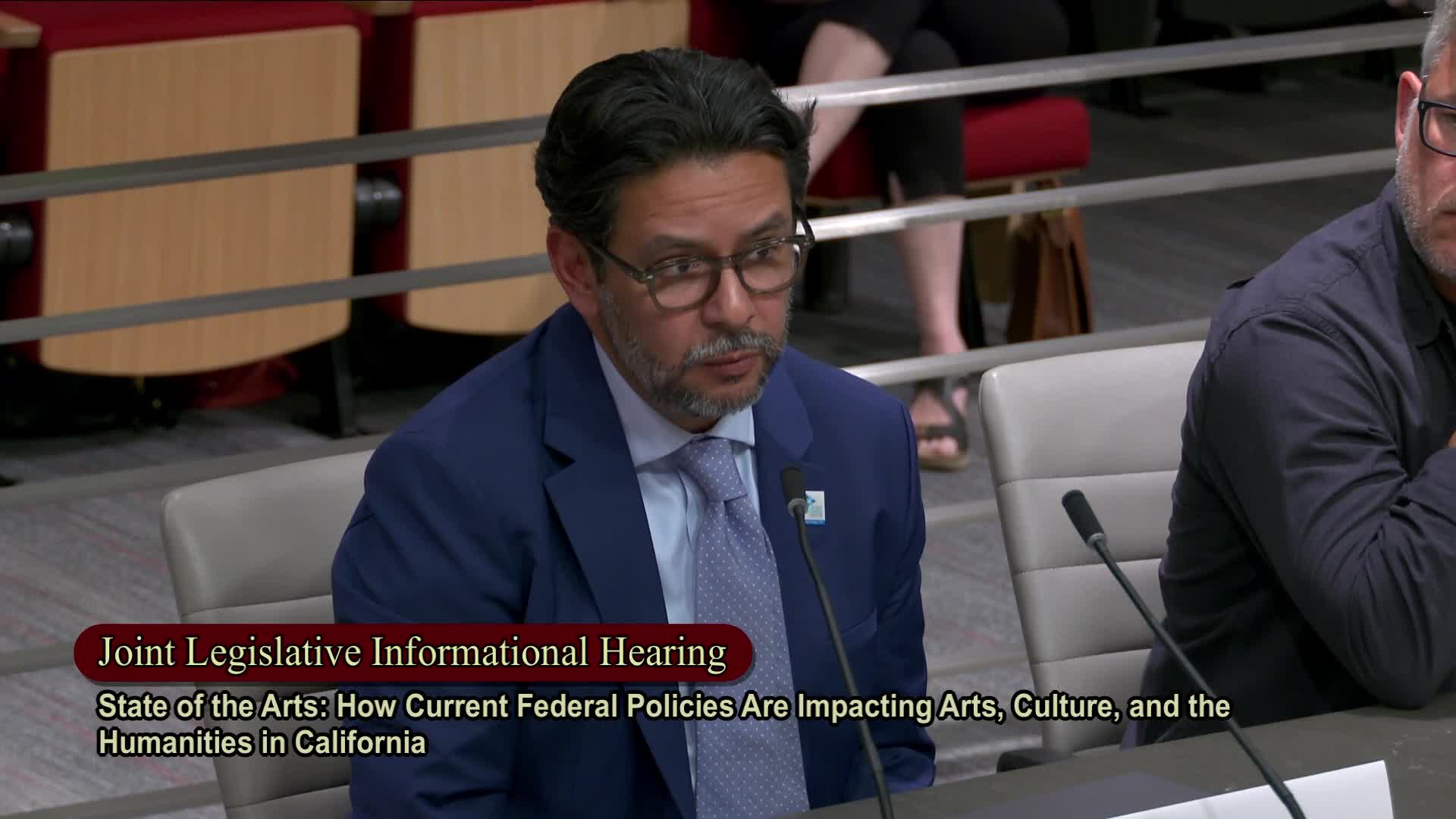California committee addresses arts education and federal funding challenges for communities
May 14, 2025 | California State Senate, Senate, Legislative, California
This article was created by AI summarizing key points discussed. AI makes mistakes, so for full details and context, please refer to the video of the full meeting. Please report any errors so we can fix them. Report an error »

In a recent joint hearing of the California State Senate's Joint Committee on the Arts and the Assembly Arts, Entertainment, Sports, and Tourism Committee, a palpable sense of urgency filled the room as lawmakers and community leaders grappled with the future of arts and culture in the state. The discussions, held on May 14, 2025, highlighted the pressing need for collaboration and resilience among institutions facing significant challenges.
As the meeting unfolded, one participant emphasized the importance of "radical partnerships" among nonprofit organizations, urging attendees to unite despite differing missions. This call for collaboration resonated deeply, as many institutions are currently navigating a precarious landscape marked by budget cuts and shifting federal policies. The sentiment echoed throughout the room: the arts are not merely a luxury but a vital component of community identity and resilience.
Assembly member Gonzales shared a personal narrative, reflecting on how the arts shaped his life and worldview. He passionately advocated for increased access to arts education in schools, recognizing its transformative power for children who might otherwise be deprived of such opportunities. His remarks underscored a broader concern: the current economic climate poses a threat to the very fabric of cultural education and expression.
The conversation also turned to scenario planning, with participants discussing strategies to weather the storm of economic uncertainty. Leaders from various institutions shared insights on how they are adapting their strategic plans to remain relevant and effective. They acknowledged the lessons learned from the COVID-19 pandemic, which taught many organizations the importance of agility and community connection.
As the meeting progressed, the theme of resilience emerged as a rallying cry. Participants recognized that the fight for arts funding and support is intertwined with broader social issues, including immigration and climate resilience. The urgency to defend these institutions against external pressures was palpable, with many expressing a commitment to ensuring that communities retain their voices and identities.
In conclusion, the joint hearing served as a crucial platform for discussing the future of the arts in California. As participants left the meeting, they carried with them a renewed sense of purpose and determination to advocate for the arts, not just as a form of expression, but as an essential element of community strength and identity. The path ahead may be fraught with challenges, but the collective resolve to meet this moment with creativity and collaboration offers a glimmer of hope for the future of California's vibrant cultural landscape.
As the meeting unfolded, one participant emphasized the importance of "radical partnerships" among nonprofit organizations, urging attendees to unite despite differing missions. This call for collaboration resonated deeply, as many institutions are currently navigating a precarious landscape marked by budget cuts and shifting federal policies. The sentiment echoed throughout the room: the arts are not merely a luxury but a vital component of community identity and resilience.
Assembly member Gonzales shared a personal narrative, reflecting on how the arts shaped his life and worldview. He passionately advocated for increased access to arts education in schools, recognizing its transformative power for children who might otherwise be deprived of such opportunities. His remarks underscored a broader concern: the current economic climate poses a threat to the very fabric of cultural education and expression.
The conversation also turned to scenario planning, with participants discussing strategies to weather the storm of economic uncertainty. Leaders from various institutions shared insights on how they are adapting their strategic plans to remain relevant and effective. They acknowledged the lessons learned from the COVID-19 pandemic, which taught many organizations the importance of agility and community connection.
As the meeting progressed, the theme of resilience emerged as a rallying cry. Participants recognized that the fight for arts funding and support is intertwined with broader social issues, including immigration and climate resilience. The urgency to defend these institutions against external pressures was palpable, with many expressing a commitment to ensuring that communities retain their voices and identities.
In conclusion, the joint hearing served as a crucial platform for discussing the future of the arts in California. As participants left the meeting, they carried with them a renewed sense of purpose and determination to advocate for the arts, not just as a form of expression, but as an essential element of community strength and identity. The path ahead may be fraught with challenges, but the collective resolve to meet this moment with creativity and collaboration offers a glimmer of hope for the future of California's vibrant cultural landscape.
View full meeting
This article is based on a recent meeting—watch the full video and explore the complete transcript for deeper insights into the discussion.
View full meeting
